Tuesday, April 24. 2012
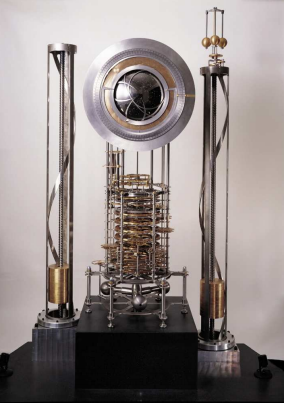
Ten thousand years is about the age of civilisation. Archaeologists have a few relics that have spanned this period, mostly stone tools and works of art. But most evidence of the earliest civilisations has long crumbled into dust.
So the plan to build a mechanical clock that will keep time for the next ten thousand years is hugely ambitious. And yet that is exactly the goal of the Long Now Foundation, an organisation set up to promote long term thinking and responsibility.
These guys are currently building a prototype of their clock inside a mountain in Texas near the border with New Mexico. And today, Danny Hillis at the foundation and a few pals, outline the way in which it will keep time.
Keeping time over such a period generates numerous challenges. First is ensuring the mechanical integrity of the machinery, which they achieve with long-lasting materials such as titanium, ceramics, quartz and sapphire.
Just as important is the environment: a series of tunnels carved into a mountainside in the high desert. Inside the mountain, the conditions are dry and the temperature constant.
Outside, however, the temperature varies between dessert extremes of hot and freezing. Hillis and co plan to exploit this temperature difference to power the clock using metal rods that change in length as the temperature varies. Human visitors will also be able to wind it.
As for time, the heart of the clock is a titanium pendulum with a 10 second cycles. Pendulum Time advances one unit once every 30 cycles, in other words every five minutes.
The rest of the clock is a digital computer using Pendulum Time as an input and generating analogue outputs in the form of various displays of time.
The mechanism first calculates Uncorrected Solar Time using a straightforward equation of time, which has been precomputed for the next ten thousand years to within the accuracy of the Earth's variable rotation.
Next, the clock calculates Solar Time using a correction provided by a solar sychroniser: a vertical chamber that heats up when the sun is directly overhead and shines into it. This can add or take away a tick if the clock is out of sync. "The correction is positive if the Sun is detected before the just-before-noon tick, and negative if it is detected after the just after-noon tick," say Hillis and co.
An obvious problem occurs if the Sun is obscured for long periods of time, perhaps because of dust from a volcanic eruption. In that case, the clock will keep uncorrected solar time until the Sun becomes visible again. Then it can correct the time in 5 minutes steps each sunny day.
It is this mechanism that corrects for any changes in the Earth's rotation, caused by climate change, shifts in the Earth's crust and so on. An accumulation of ice at the poles will cause the rotation to speed up, for example.
But provided the clock does not drifted by more than 12 hours, it should return to the right time. "This allows the clock to successfully recover after more than a century of overcast skies," say Hillis and co.
The clocks uses Corrected Solar Time to generate a Displayed Solar Time that visitors will see. It also calculates Orrery Time, a display of the position and phase of the Moon, the tropical year, the sidereal day, orbits of the visible planets, and the precession of the Earth's axis.
The plan is to use the lessons from building this prototype to create another clock in a mountain in Nevada. After that, the creators hope that other groups around the world will make their own millennium clocks, thereby spreading the pattern of long term thinking.
A profoundly impressive project.
Personal comment:
Obviously we are interested in "dimensions" and the way to architecture or interact with them. In this case, it is particularly interesting to underline the relationship between the construction of the clock (its materials, architecture) and the environment (the tunnels) that could/should last unchanged for 10'000 years.
Friday, November 11. 2011
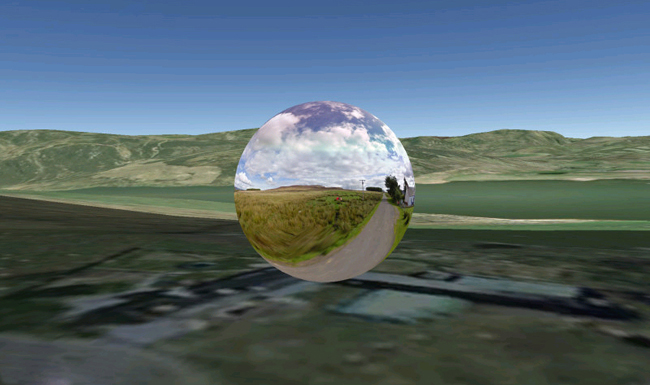
Tracing Mobility: Cartography and Migration in Networked Space — Exhibition, Symposium and Open Platform :: November 24 - December 12, 2011; Opening: November 23; 7:00 pm :: Haus der Kulturen der Welt, John-Foster-Dulles-Allee 10, 10557 Berlin.
Tracing Mobility sets out to examine the shifting terrain of global versus individual mobility and how its hand in hand development with networked infrastructure is transforming our conceptions of time, space and distance.
Where can we escape to when online- and offline worlds converge? What does the movement of a body in a landscape indicate when every point of the earth is within reach through the aid of digital technology? How do mobile devices and media alter our mindset and change our perception of time and space?
With installations, videos, performances and paintings, but also iPhone Apps, maps and open-source collaborations, we see artists developing strategies in order to position themselves within this dynamic topography.
A Symposium and the Tracing Mobility Open Platform offer further explorations of these themes via lectures, talks and workshops.
Exhibiting artists: Frank Abbott (UK), Aram Bartholl (DE), Neal Beggs (UK/FR), Heath Bunting (UK), Janet Cardiff / George Bures Miller (CAN), Miles Chalcraft (UK/DE), Simon Faithfull (UK/DE), Yolande Harris (UK/NL), Folke Köbberling & Martin Kaltwasser (DE), Landon Mackenzie (CAN), Open_Sailing, plan b (Sophia New & Dan Belasco Rogers) (UK/DE), Esther Polak & Ivar yan Bekkum (NL), Gordan Savicic (AT/NL), Mark Selby (UK), Michelle Teran (CAN/DE)
Programme:
November 23
7pm Opening
9pm Artist Talk with Simon Faithfull, Landon Mackenzie, Esther Polak & Ivar van Bekkum
November 26
11 – 5pm Symposium, Entrance: 20 €/15 €
2pm Participatory Performance „Performing StreetView“ by Esther Polak & Ivar yan Bekkum (NL)
(registration required)
December 12
7pm Finissage | Artist Talk with Aram Bartholl, Folke Köbberling & Martin Kaltwasser, plan b
(Sophia New & Daniel Belasco Rogers)
High-res pictures are available on request: presse [at] trampoline-berlin.com
Tracing Mobility is a project by Trampoline - Agency for Art & Media, in cooperation with Haus der Kulturen der Welt and Radiator Festival Nottingham, curated by Miles Chalcraft and Anette Schäfer.
Tuesday, July 12. 2011
Via BLDGBLOG
-----
by noreply@blogger.com (Geoff Manaugh)
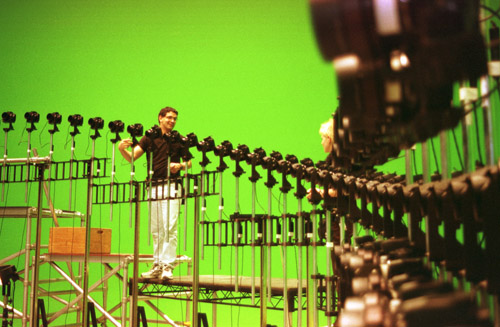 [Image: The infrastructure of bullet time]. [Image: The infrastructure of bullet time].
A digital image-processing system under development since 2007 will allow photographers "to artificially create photos taken from a perspective where there was no photographer." It uses "a computer-vision technique called view synthesis to combine two or more photographs to create another very realistic-looking one that looks like it was taken from an arbitrary viewpoint," as New Scientist explains.
One expert quoted refers to this as "anonymizing the photographer."
The images can come from more than one source: what's important is that they are taken at around the same time of a reasonably static scene from different viewing angles. Software then examines the pictures and generates a 3D "depth map" of the scene. Next, the user chooses an arbitrary viewing angle for a photo they want to post online.
The photo then goes through a "dewarping" stage, in which straight lines like walls and kerb angles are corrected for the new point of view, and "hole filling," in which nearby pixels are copied to fill in gaps in the image created because some original elements were obscured.
While the article rightly emphasizes the political implications of this—writing that the technology "could help protestors in repressive regimes escape arrest—and give journalists 'plausible deniability' over the provenance of leaked photos"—there are, of course, other possibilities inherent in the technique that seem worth exploring. These include virtualizing photographs taken of a landscape, building, person, or city, producing views, angles, and perspectives never actually seen by human beings; this would be like something out of the work of Piranesi, specifically as interpreted by Manfredo Tafuri in The Sphere and the Labyrinth, in which impossible scenes overlap to produce a single, yet far from comprehensive, spatial reality.
Perhaps some editor somewhere could send Iwan Baan and Fernando Guerra out to shoot a new building together, then "hole fill" their images to create a virtual, third photographer. Every image thus published in the resulting article documents a viewpoint neither photographer either experienced or saw. It is the building as seen by no one, virtually extruded from otherwise real-world photographs.
To throw another gratuitous theory reference out there, it's like Foucault's analysis of "Las Meninas" in The Order of Things, where we read that the painter may or may not have included an obscured vantage point from which his painting was supposedly painted. To translate Foucault's hypothesis into New Scientist's terms, this would be "location privacy," that is, "a way of disguising the photographer's viewpoint."
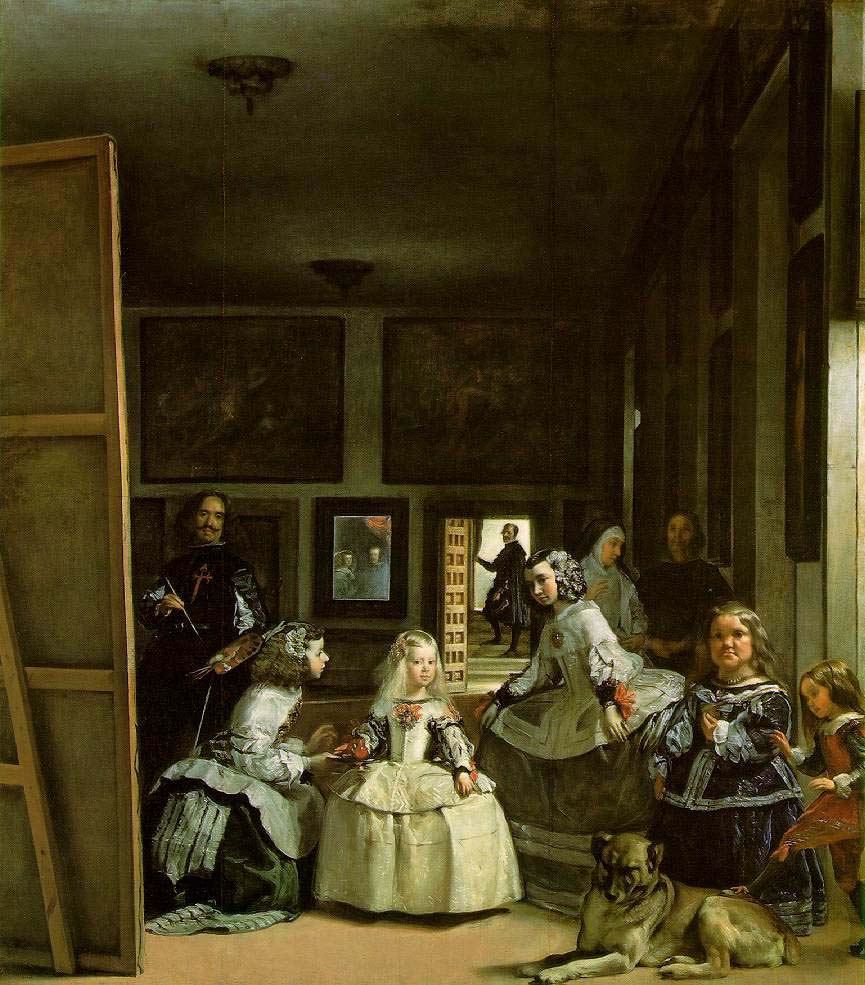 [Image: "Las Meninas" by Diego Velázquez]. [Image: "Las Meninas" by Diego Velázquez].
Or, imagine, for instance, an entire film assembled from "dewarped" images—intermediary, falsified frames precipitated out from between the cameras—creating an uncanny motion picture of interstitial imagery. Virtual films between films; films recombined to create a third cinema of gaps; virtual still images taken from virtual films, overlaid and dewarped to form fourth and fifth and sixth films generationally removed from the original, in an infinite splintering of derivative film stills. We won't document the world as everyone sees it; we'll document it from places where no one's ever been.
(Thanks to Luke Fidler for the tip).
Wednesday, July 06. 2011
Via Pasta & Vinegar
-----
by Nicolas Nova
Working on the game controller book lately, I became fascinated by visual representations of time: evolutionary trees, time-series, timelines, etc. A great resource about this is certainly “ Cartographies of Time: a history of the timeline” by Daniel Rosenberg and Anthony Grafton.
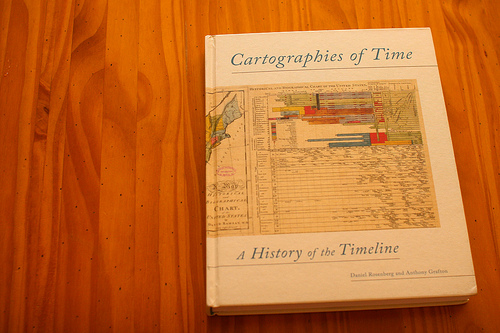
The book is a comprehensive history of graphic representations of time in Europe and the United States from 1450 to the present:
“ From medieval manuscripts to websites, Cartographies of Time features a wide variety of timelines that in their own unique ways–curving, crossing, branching–defy conventional thinking about the form. A fifty-four-foot-long timeline from 1753 is mounted on a scroll and encased in a protective box. Another timeline uses the different parts of the human body to show the genealogies of Jesus Christ and the rulers of Saxony. Ladders created by missionaries in eighteenth-century Oregon illustrate Bible stories in a vertical format to convert Native Americans. Also included is the April 1912 Marconi North Atlantic Communication chart, which tracked ships, including the Titanic, at points in time rather than by their geographic location, alongside little-known works by famous figures, including a historical chronology by the mapmaker Gerardus Mercator and a chronological board game patented by Mark Twain.“

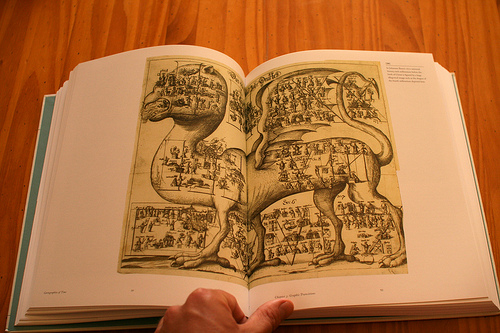
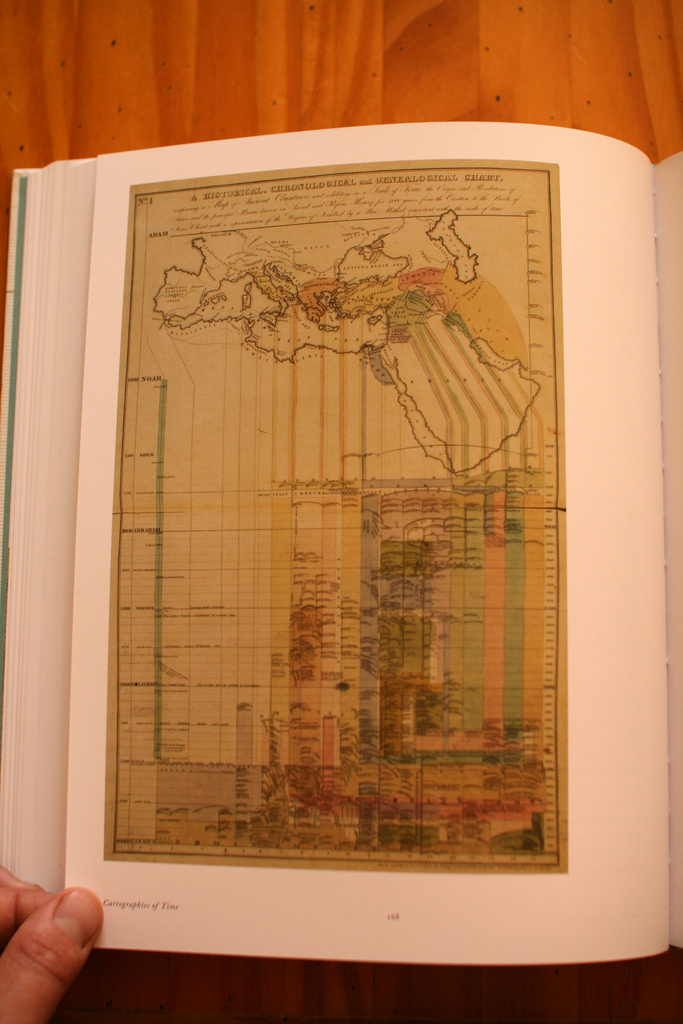
There’s also this gem at the end of the book, a sort of “Fog of war” representation:
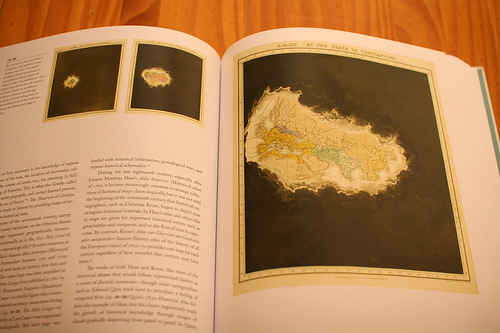
Why do I blog this? Beyond the use of these as models to try different representations of game controller evolutionary trees, I am fascinated by the ways these timelines also add interesting spatial components on top of time-related visualizations.
Friday, April 29. 2011
Pictures taken out from the BLDGBLOG post about Nicholas Monchaux's recent book: Spacesuit: Fashioning Apollo.
-----
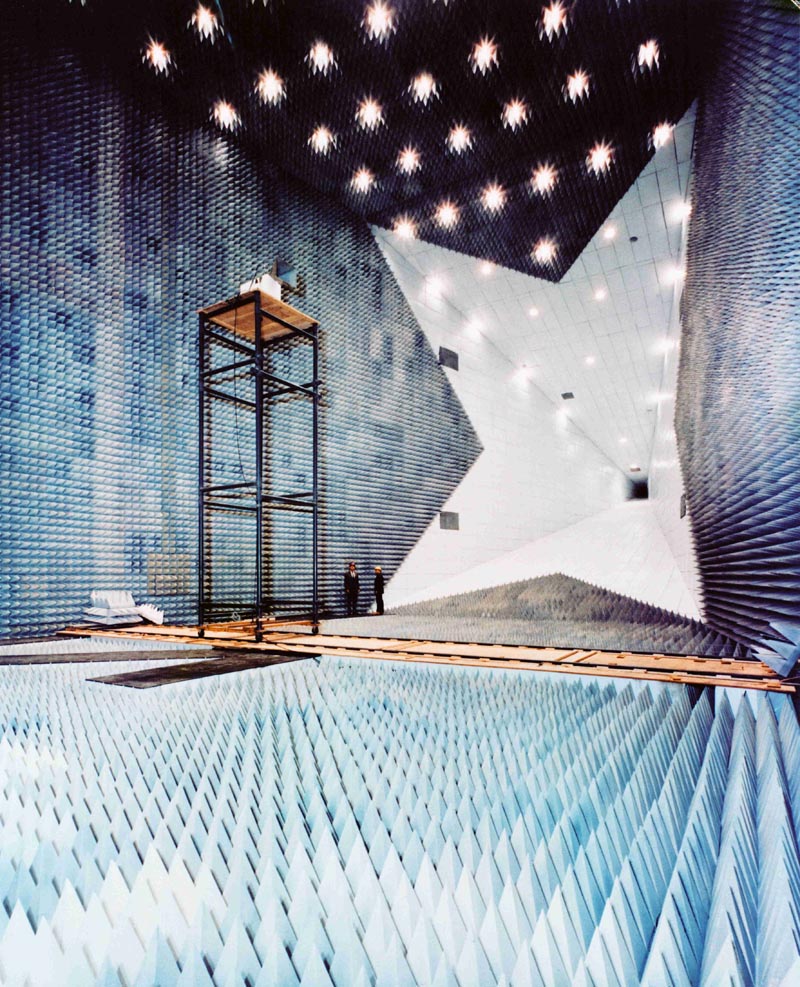
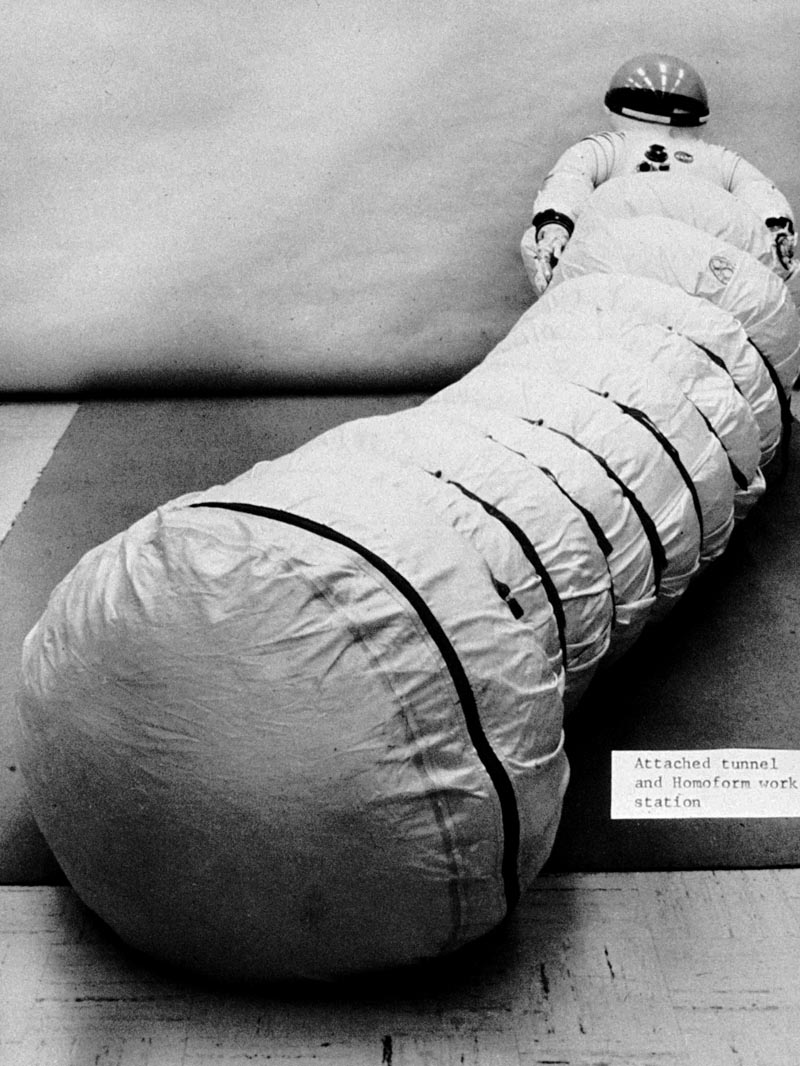
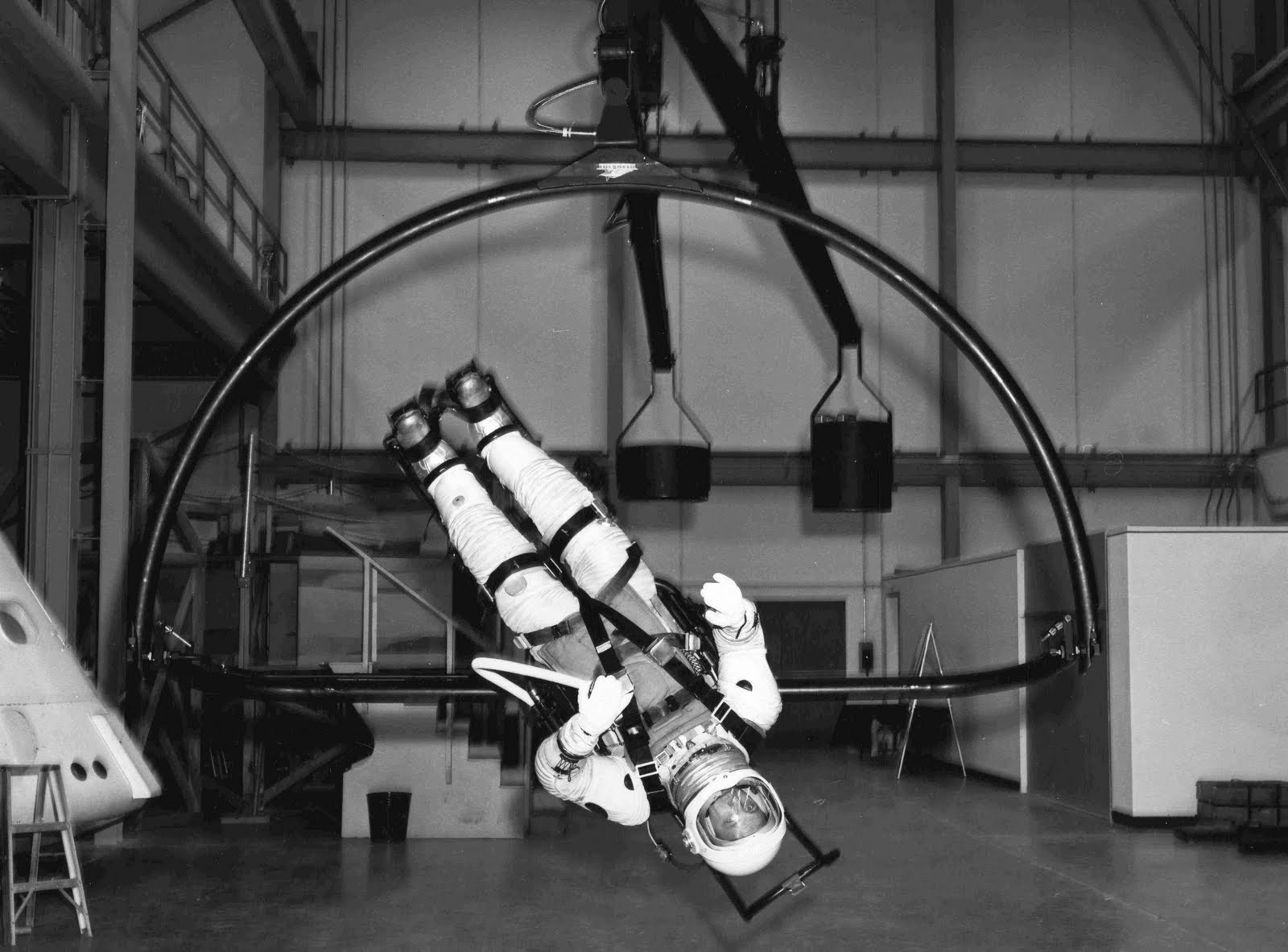

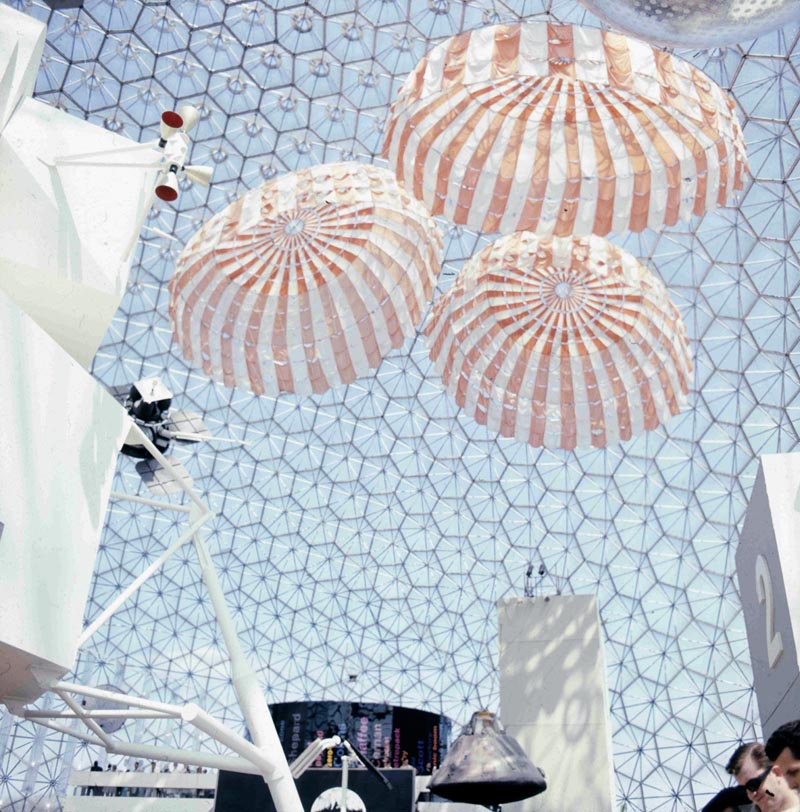
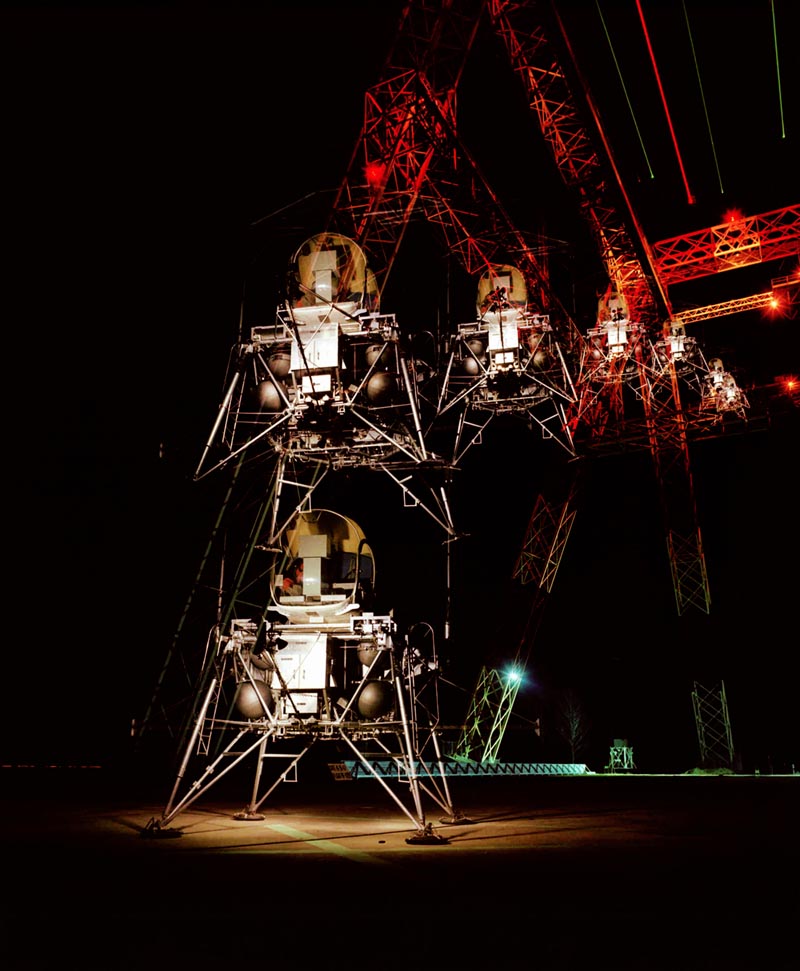
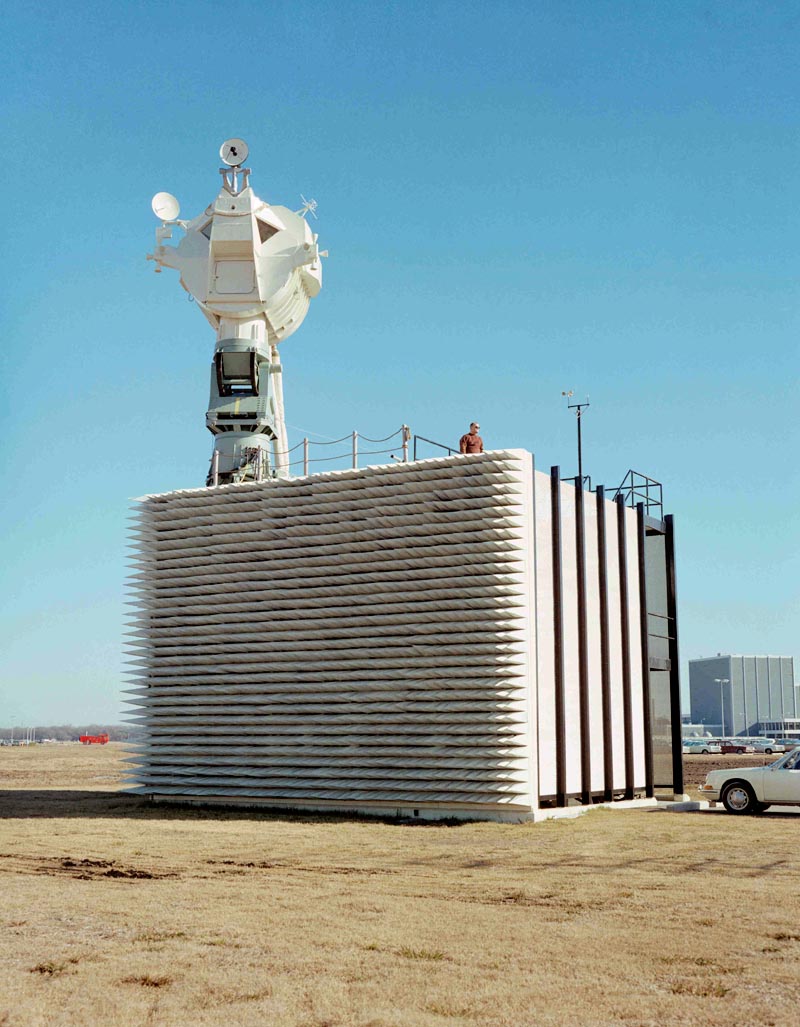

[Images: From Spacesuit: Fashioning Apollo by Nicholas de Monchaux].
Monday, January 24. 2011
Via Networked Performance
-----
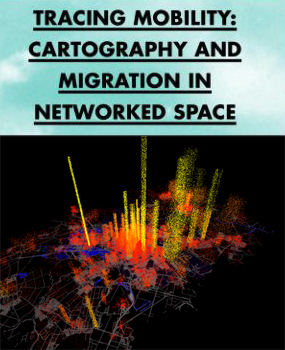
Tracing Mobility – Cartography and Migration in Networked Space @ transmediale, Neu Bar, Greifswalder Str. 218, Berlin :: January 30 — Call for Ideas.
Following events in the UK, Warsaw and the Croatian coast in 2010, Trampoline will present the exhibition, Tracing Mobility – Cartography and Migration in Networked Space, at the Haus der Kulturen der Welt in November 2011, alongside an open platform of ideas. The opportunity starts now. On January 30th, during Transmediale’s ‘DAS Weekend’, we invite you to pitch your idea in an informal manner over a drink at Neu Bar. The ‘pitch’ can take the form of a presentation, performance or simply a chat with us. Get in touch with us asap to book a slot or to request further information.
Tracing Mobility is a project that sets out to examine the shifting terrain of global versus individual mobility and how the hand in hand development with networked infrastructure is transforming our conceptions of time, space and distance.
In the expectation that many interesting projects and speakers on the theme exist already, we intend to provide a space to encourage spontaneous, ad hoc input from the floor from cultural sectors that are outside our usual scrutiny. Towards this, the curators are inviting artists, cultural practitioners, researchers, NGO’s and the interested public to contribute to the Tracing Mobility Open Platform in the form of presentations, interventions, performances, workshops, or any other activity responding to the theme.
Contact info [at] trampoline-berlin.de
Venue: Neu Bar, Greifswalder Str. 218, Berlin, link to map
Project website http://www.trampoline.org.uk/tracingmobility/
Trampoline Berlin website http://www.trampoline-berlin.de
Thursday, December 09. 2010
Via Creative Review
-----
by Mark Sinclair
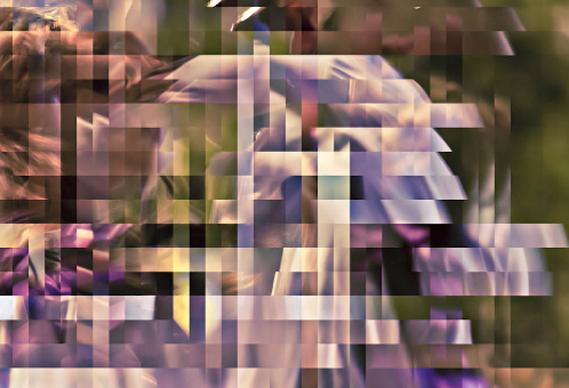
Detail from In Transit 4 by Diego Kuffer
Brazilian photographer Diego Kuffer takes the concept of photomontage to another level in his series, In Transit...
Recently posted to his website (and noted on BoingBoing), Kuffer's pixellated-looking work presents several images of the same thing – be it a merry-go-round or traffic on an underpass – chopped up into a composite image.

In Transit 12
Unlike the traditional 'photomontage' technique of overlaying printed images to form a unified picture – which everyone from me to David Hockney has had a go at (why not just use a wide angle lens?) – Kuffer's creations suggest what is and isn't there in any given stretch of time. Almost like a still image of a whole film, if that were possible.
After experimenting with the medium, Kuffer explains on his website, he became frustrated at only being able to capture "instants".
"So, I decided to hack photography," he writes, "[taking] the technique behind movie making and applying it to my photos. Photographing the same instant several times, slicing and dicing the results and mixing it all together chronologically. This way I was able to capture a moment, not showing what exactly happened, but at least showing that a moment happened."
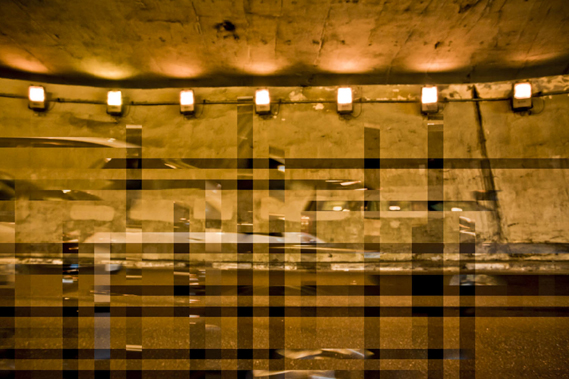
In Transit 18
While some of the images perhaps don't record the most interesting of subjects and are more concerned with capturing the 'movement' of a street scene, for example, some of the more abstract pieces are really rather beautiful.
The whole series can be viewed at diegokuffer.com.br.
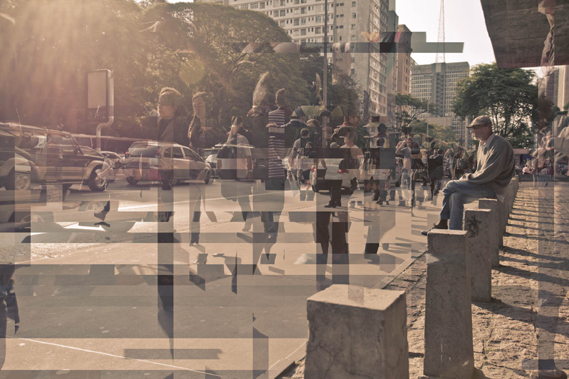
In Transit 14

In Transit 2
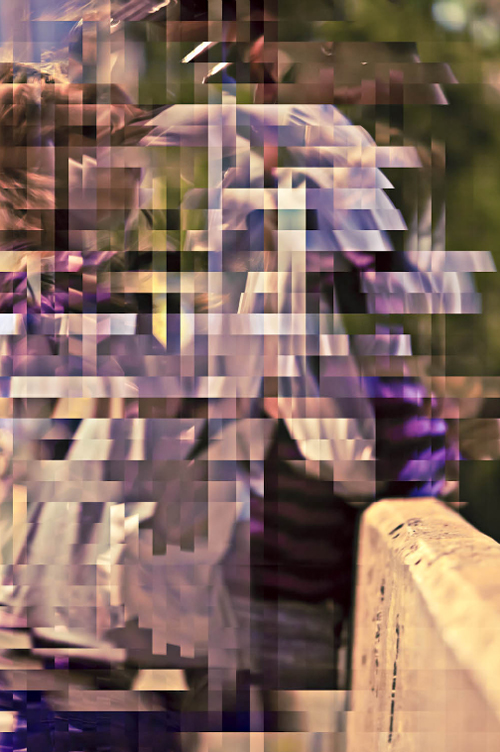
In Transit 4 (detail show, top)
Tuesday, October 26. 2010
Via It's Nice That
-----
by Bryony

As engaging as it is an excellent concept, The Clock is the latest video installation by Christian Marclay now on at the White Cube Mason’s Yard. A chronological collage that pieces film footage into a twenty-four hour clock, using the illusionary devices that carry you through the duration of a cinematic narrative – characters checking watches, dramatic shots of a clock on the mantle piece, etc – by localising the time zone of a fictional event, it’s as if fantasy is replaced with real time.
www.whitecube.com
Friday, October 01. 2010
Via fabric | ch
-----
(Sur un texte d'Emmanuel Mahe).
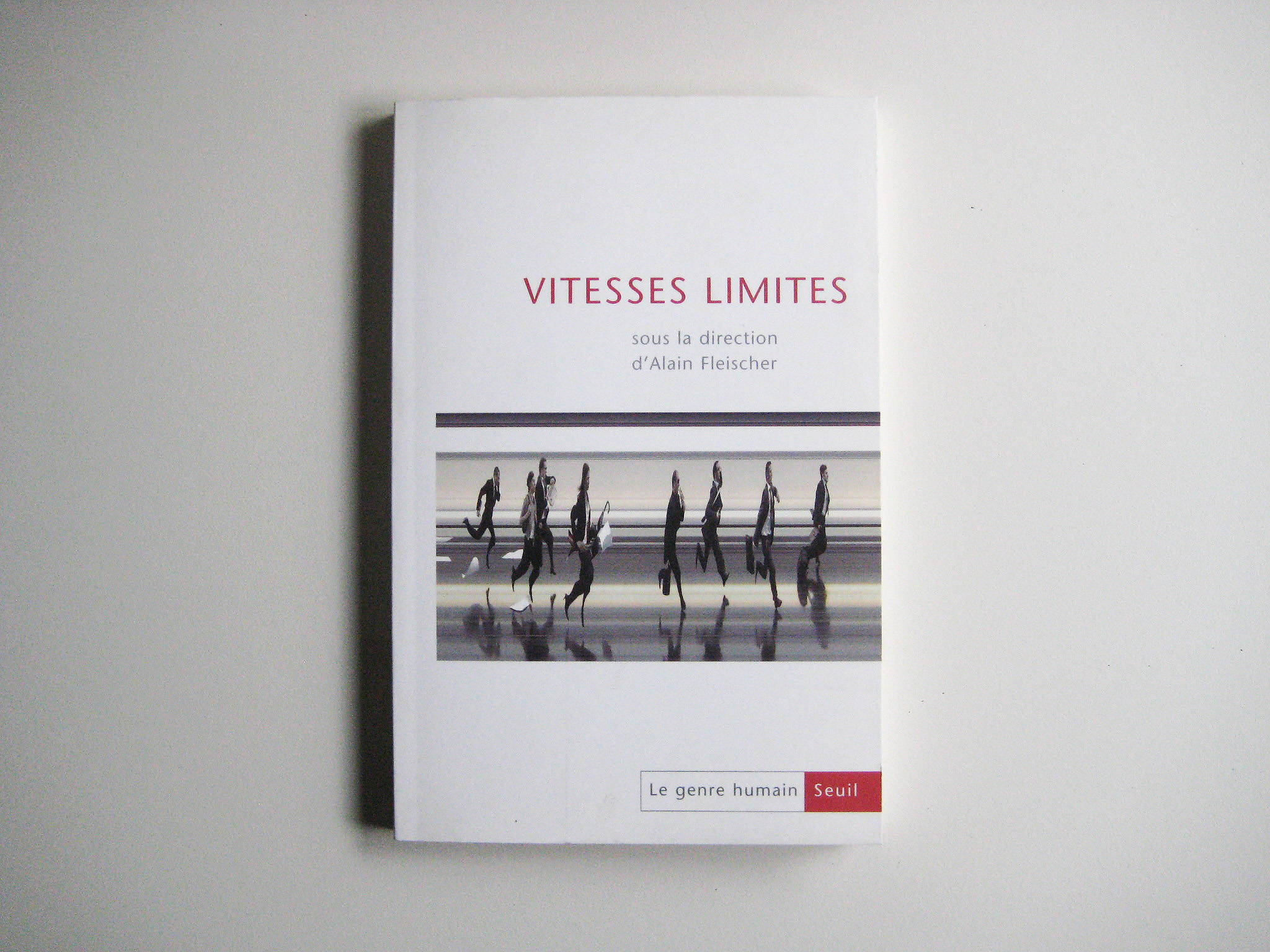
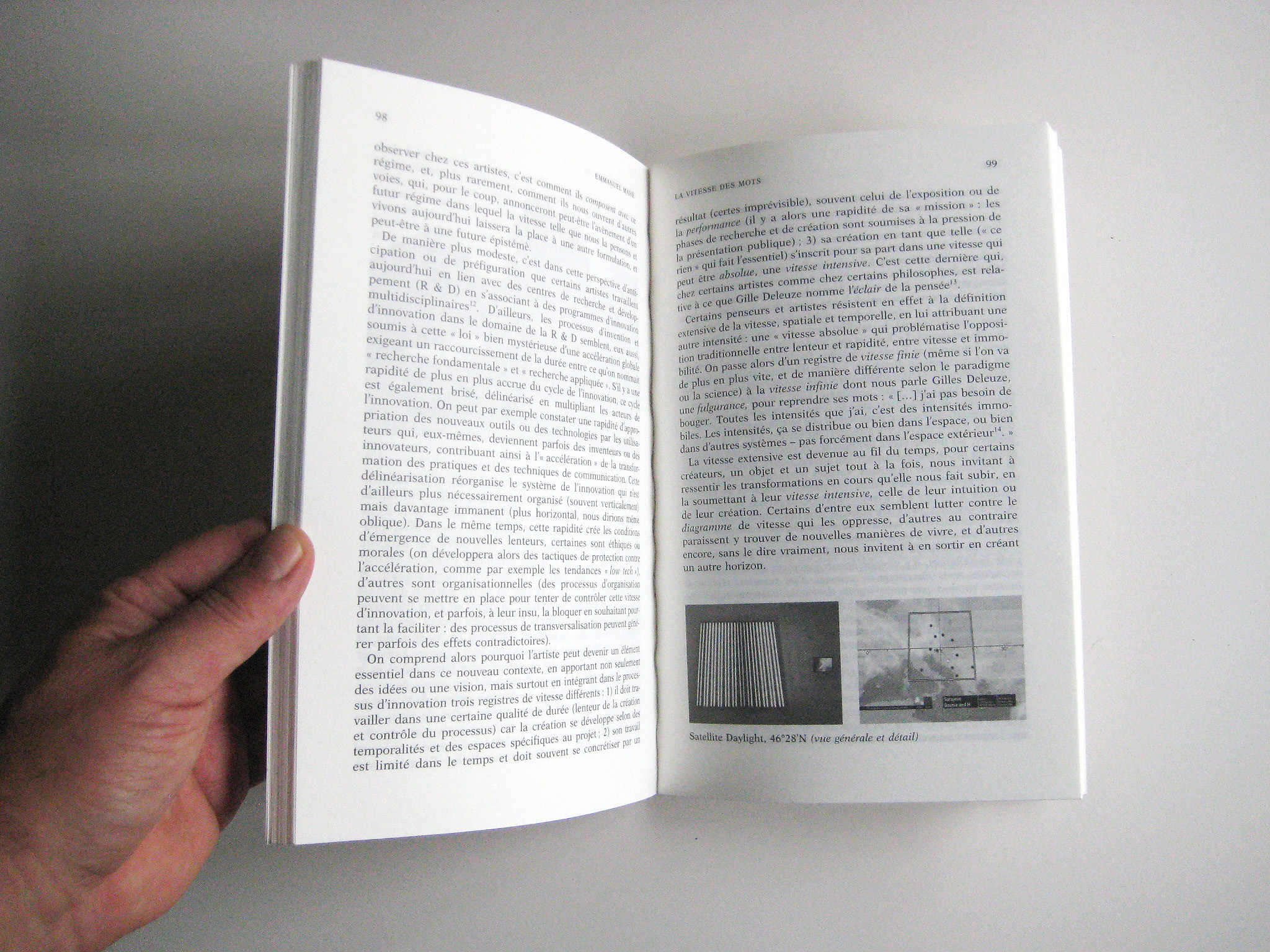
Monday, August 23. 2010
-----
by Morgan Clendaniel
|


 [Image: The infrastructure of
[Image: The infrastructure of  [Image: "
[Image: "























